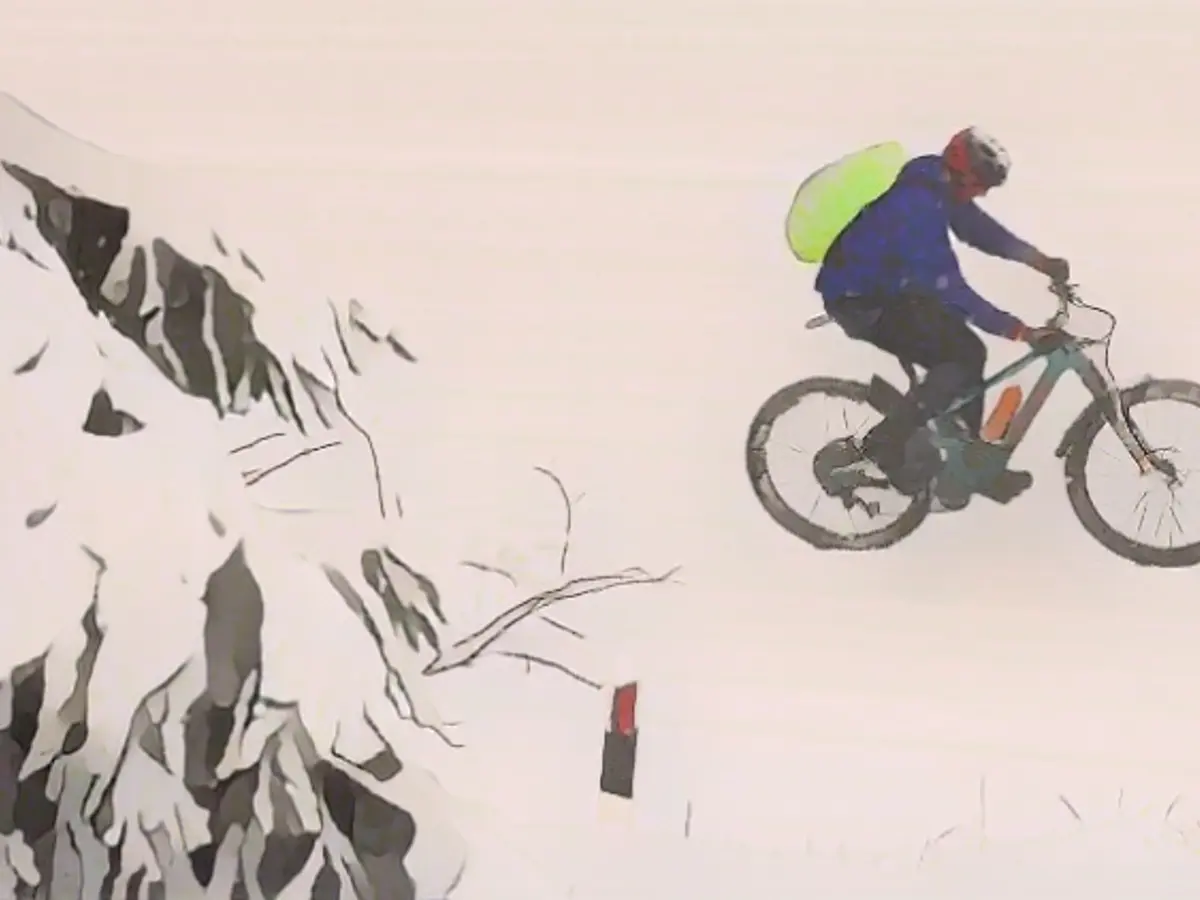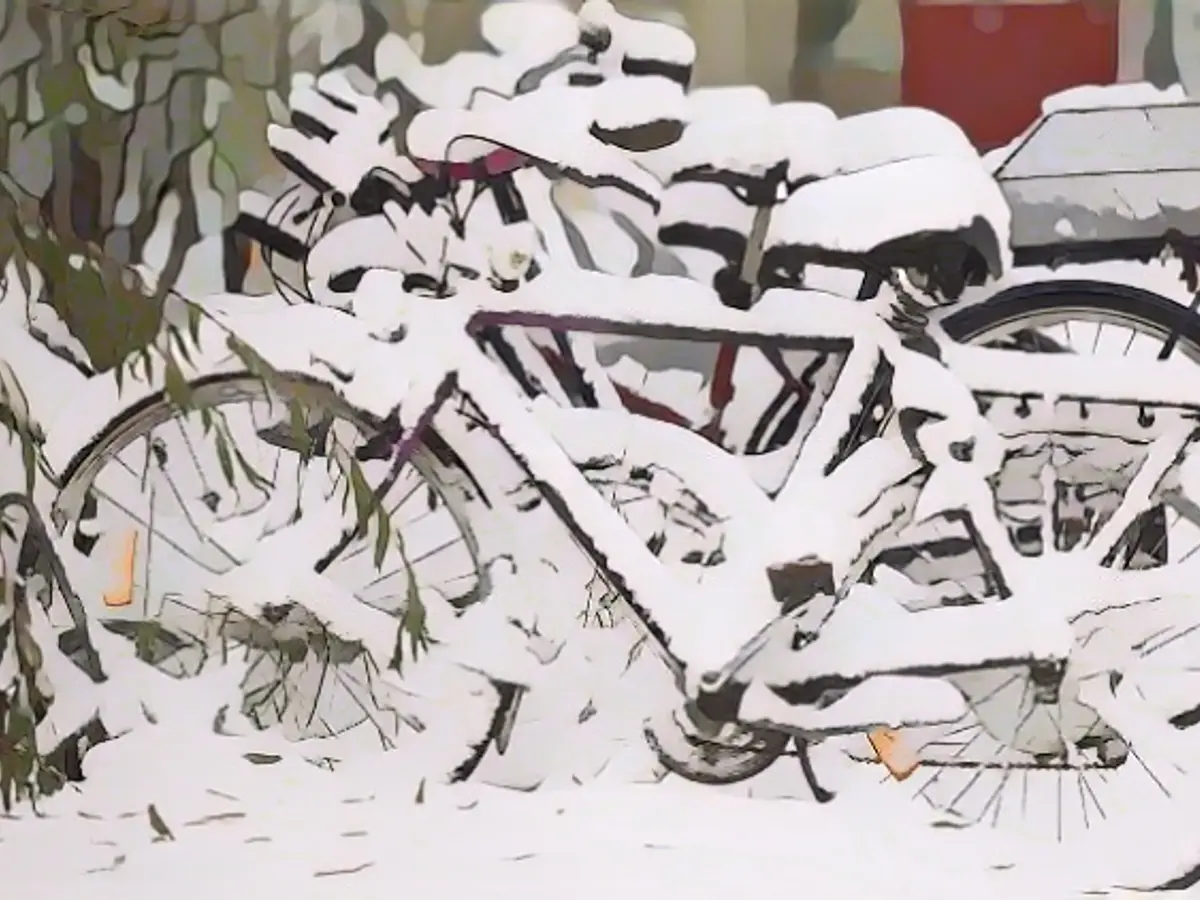Cycling in winter - how to take the plunge
Is cycling only for spring, summer and fall? Not necessarily. You can even get on your bike in winter in the snow - if you are well prepared for the adverse conditions.
Ice and snow have become the exception rather than the rule in many places in Germany in winter, which is why more and more bikers are getting on their bikes in the darker months of the year. However, those who are not afraid of poor visibility, cold and sometimes snow should adapt their equipment and riding style to these not always easy conditions.

In the dark season, visibility is particularly important for all road users. A front spotlight and a rear light are mandatory for bicycles and e-bikes anyway. In addition to permanently mounted lights, battery-powered clip-on sets are also permitted - they only need to be carried at dusk and in the dark. Tail lights with a brake light function are also permitted, provided these products comply with UNECE Standard 50.
If you still have old halogen bulbs fitted to your bike, it is best to upgrade to LED lights. You can get significantly better light for little money. In addition to hub dynamos, old side-running dynamos can also be converted to LED. If you are thinking of buying a new bicycle helmet, it is better to choose a model with an additional LED light, which further increases visibility. Clothing also helps to optimize the wearer's visibility. Light-colored clothing is better than dark-colored clothing, and many reflectors are better than none.
Clothing according to the onion principle
Clothing should also keep you warm. The onion principle with several layers is recommended for cyclists. The garments in the top layer should be wider so that there is room for layers underneath. Ideally, these should consist of functional clothing that wicks moisture to the outside. In addition to synthetic fibers, merino wool also has this effect. Windproof, waterproof and breathable clothing that does not restrict your freedom of movement too much should be worn on top.

Hands, feet and ankles require particularly good protection from the cold. Winter gaiters or thermal boots specially developed for cyclists are ideal for the latter. Warm insoles also help. We recommend wearing mittens for your hands. If you are particularly sensitive to the cold or ride longer distances on your e-bike, you can also equip yourself with gloves or insoles with an electric heating function. These battery-operated accessories keep you warm even at temperatures in the double digits below zero.
Arm, leg, knee and kidney warmers as well as face masks also offer protection against extreme cold. Protective goggles prevent your eyes from watering due to the cutting wind. However, you will need to invest several hundred euros for winter equipment that can withstand even extreme cold.
Cycle paths often not cleared
If you want to get on the saddle even in the most adverse road conditions, you have to be prepared for the fact that cycle paths are not cleared. Often the snow is even piled up there by snow clearing vehicles. If the cycle path is covered in snow, cyclists should use the lane that is actually reserved for cars, even if the signs indicate that the cycle path should be used. The ADAC therefore urges motorists to be particularly careful, as cyclists on the road should be overtaken at an appropriate speed and at a particularly large distance, as all road users can slip more easily in winter.
Special care is required when riding a single-track bike on snow and ice. Diminishing traction requires extremely sensitive use of both brakes. Tires find comparatively good traction on moderately thick and fresh snow, but it becomes extremely slippery on frozen surfaces. Due to the longer braking distances, it is advisable to drive with as much foresight as possible. The bike slips particularly easily on bends. It is important to slow down early on and to avoid pedaling and braking. On black ice, the bike easily loses grip completely during steering and braking maneuvers.
Less tire pressure - more grip
If you want more grip on snow and ice, you can lower the tire pressure, but this slows down the ride. A better alternative are winter tires for bicycles, which increase grip on snow with their special rubber compound. If they are fitted with studs, even icy passages can be mastered reasonably safely. Unlike cars, the grippy studded tires for bicycles are permitted in Germany. Manufacturers such as Schwalbe, Continental and Kenda offer various tire models with studs in common sizes. Online prices start at around 25 euros per tire.
Bikes used in the wet and cold season require more intensive care. Occasional superficial cleaning and re-greasing of moving parts is recommended. If you ride with a classic metal chain, you should ideally re-grease it after every ride and clean it occasionally. For other metal parts, it is worth using special care products to prevent corrosion.
Despite the potential dangers of traffic accidents in snowy weather, many bicyclists choose to brave the cold and dark winter months. After an automobile slides off the road due to poor road conditions, a bicyclist with proper lighting and clothing effortlessly navigates past, showing that the right equipment can make cycling safer in adverse weather. In fact, the bicyclist's choice of tires, such as studded winter tires, even allows for more grip on icy surfaces, ensuring a safer journey.
Source: www.ntv.de








